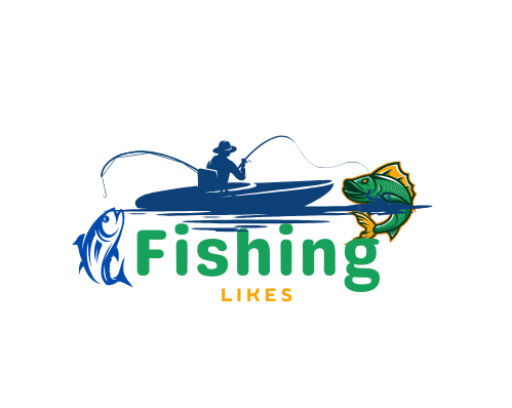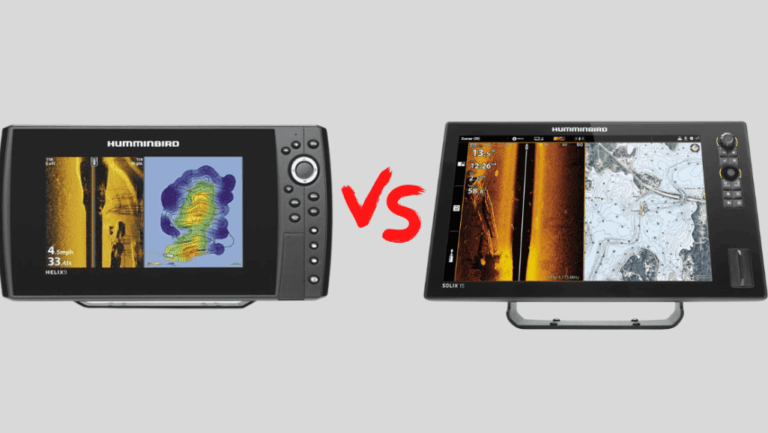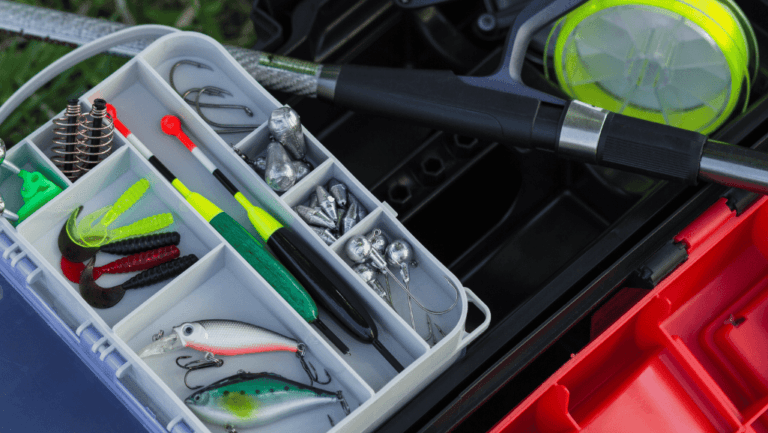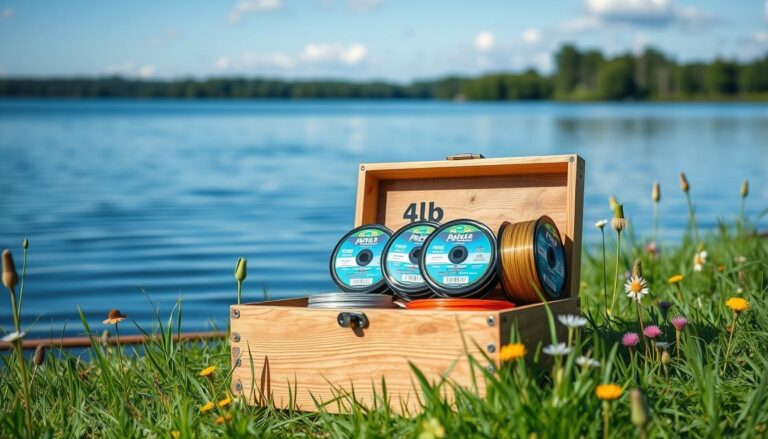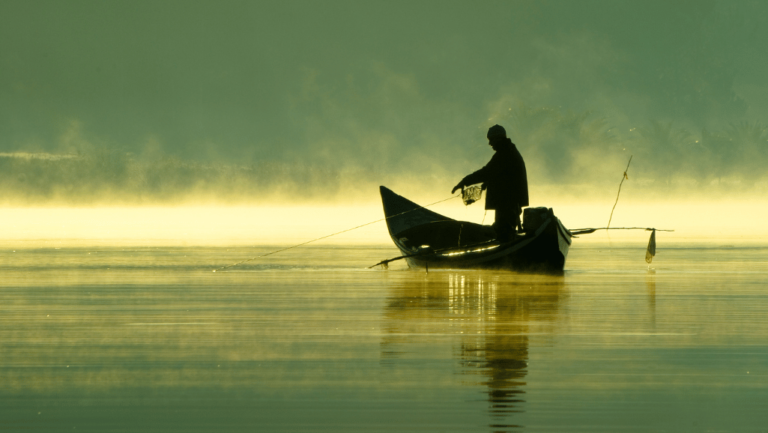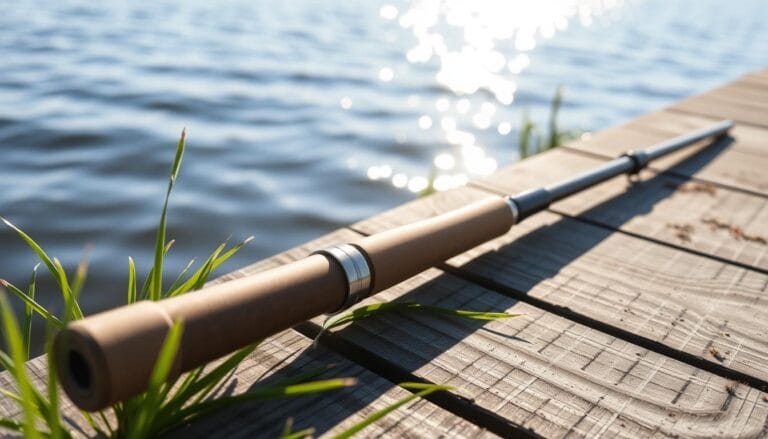Start your fishing journey with our ultimate trout fishing guide. It’s packed with trout fishing tips for both beginners and pros. You’ll learn the best trout fishing techniques and how to catch trout. This guide is perfect for those new to fishing or looking to improve.
We offer insights for all fishing enthusiasts. Learn about trout behavior and how to adapt to different fishing spots. Focus on the bottom of the water, where trout often feed, whether you’re fishing in lakes or rivers.
Try fishing at night for brown trout with ultra-light lines. This method blends well with the water and increases your chances of catching them. With the right gear, like a soft net and a long, flexible rod, you’re set for success.
Key Takeaways
- Employ ultra-light lines for a natural presentation imperative to trout fishing success.
- Embrace the cover of darkness to target brown trout, utilizing nocturnal habits.
Familiarize with stream bottom fishing, where ninety percent of trout feeding takes place.
- In clear, low waters, avoid casting shadows to prevent spooking trout.
- Keep gear simple yet effective — a long rod, light line, soft net, and versatile lures are key.
- Understand and respect local trout fishing regulations to ensure sustainable practices.
- Familiarize with state guidelines and public resources for prime trout fishing locations.
Understanding Trout Varieties and Habitats
The world of trout is full of variety, showing us the beauty of aquatic life. It includes native trout species and stocked trout fishing programs. We’ll explore the different trout types, where they live, and how this affects trout fishing locations and strategies.
Native and Wild Trout Populations Across America
The U.S. is home to many native and wild trout species, each living in its own special place. From the brook trout in the East to the cutthroat trout in the Rockies, knowing where and how these trout live is key for anglers. Trout can live in many places, like cold rivers and deep lakes, because they adapt well.
Stocked Trout: Enhancing Fishing Opportunities
Stocked trout fishing is important for managing fish populations and helping anglers. Trout are raised in hatcheries and released to fill in where they’re needed. This helps keep the fishing good and supports the environment and local economies.
Habitat Preferences of Trout: Lakes, Rivers, and Streams
Trout like different places to live. Brown trout do well in deep, quiet spots, while rainbow trout prefer fast-moving water to chase insects. Knowing where trout like to live helps anglers plan their fishing trips and increases their chances of catching fish.
Let’s look at how different trout species live and behave in various places:
| Trout Species | Preferred Habitat | Behavioral Traits | Feeding Preferences |
|---|---|---|---|
| Brown Trout | Deep, dark spots with dense cover | Nocturnal, solitary | Larger prey like fish and crawfish |
| Rainbow Trout | Moving waters, behind submerged rocks | Social, active feeders throughout the day | Aquatic insects |
| Brook Trout | Pockets and isolated cuts along banks | Semi-social, aggressive towards lures | Aquatic insects, occasionally small fish |
This table shows where to find trout and the best times and ways to catch them. It makes fishing for trout more rewarding in different trout fishing locations.
The Best Times and Locations to Fish for Trout
Fishing for trout is a popular activity around the world. Knowing the trout fishing seasons and top trout fishing destinations can make your experience better. Whether you’re heading to North America’s famous streams or New Zealand’s diverse waters, planning with the trout fishing season calendar is key to success.
The best times to fish change with the seasons. In spring, fish in the warmest part of the day. Summer is best in the early morning and late afternoon to dodge the heat. Fall is great at dusk, and winter in the midday when it’s a bit warmer.
| Season | Best Fishing Time of Day | Recommended Flies |
|---|---|---|
| Fall | Dusk | Yellow midges, mayfly, caddis stonefly, terrestrial flies |
| Winter | 11 A.M. – 3 P.M. | Midge and mayfly nymphs, red eggs, worms |
| Spring | Warmest part of the day | Green midges, mayfly, stonefly, eggs, worms |
| Summer | Early morning and late afternoon | Yellow, worms, terrestrial, stoneflies, caddis, mayfly, midges |
Looking for ultimate trout fishing locations? Patagonia offers vast, untouched waters. Montana and Colorado in the U.S. have classic streams. Europe’s Slovenia and Spain also have unique spots for trout fishing, great for all skill levels. Planning your trip with these tips ensures a successful fishing trip any time of year.
While these tips are helpful, remember that local conditions like water flow and temperature can affect your success. Staying flexible and informed with resources like the trout fishing season calendar can help you adjust your plans for your chosen destination.
Essential Trout Fishing Gear for Anglers
For those who love trout fishing, picking the best trout fishing gear is key to catching fish and having fun. Trout live in cool water and are mostly found in streams. They need special gear.
The right rod and reel can make a big difference in your fishing. Fly fishing rods are 7 ½ to 9 feet long and perfect for casting in trout’s home. These rods help with precise casting and keeping the line tight. Beginners often start with shorter, 5-6 foot rods that are easy to use.
Choosing the Right Rod: Length Matters
For big trout or clear water, a medium to heavy-action rod is best. It gives you control and accuracy, which is vital for trout fishing gear essentials. Using a thin, less visible line helps you blend in with clear water and increases your chances of catching a fish.
Reels and Lines: Going Ultralight
Spinning reels are easy for beginners, while baitcasting reels offer more precision. The line should be 4-6 for fly rods and a bit stronger for spin fishing. This strength helps the line handle trout’s quick moves without breaking.
Baits and Lures Selection for Trout
Choosing the right trout fishing bait and lures is crucial. Live baits like doughbait, salmon eggs, and worms work well because trout find them appealing. Artificial lures like inline spinners, minnow baits, or spoons also work well to attract trout.
| Live Bait | Artificial Lures | |
|---|---|---|
| Common Choices | Salmon eggs, Worms, Minnows | Spinners, Spoons, Crankbaits |
| Maintenance | Requires regular replacement | Minimal maintenance |
| Typical Use | Clear and slow-moving waters | Faster currents and varied depths |
Landing nets are a must-have trout fishing gear essentials because trout fight hard when hooked. Always have hemostats or forceps ready to safely remove the hook. This helps you keep the fish safe and protects the environment.
The Ultimate Trout Fishing Guide
Starting to catch trout like a pro takes more than just a hook and a worm. It’s important to learn about ultimate trout fishing strategies. You need to know about gear and how trout act in different places.
Fishing trips on Lake Michigan or the Grand Traverse Bay show the variety of trout fishing. Whether on a 24-foot or a 43-foot boat, you must adjust your fishing to fit the place and the trout type.
| Trip | Guided By | Boat Size | Starting Price |
|---|---|---|---|
| Lake Michigan Salmon and Trout Trip | Tim | 33-foot | $750 |
| Grand Traverse Bay Trip | Jim | 24-foot | $400 |
| Luxury Lake Michigan Trout & Salmon | Steven | 43-foot | $1,200 |
Brown trout are great for fishing all year and are popular among experts. They are hard to catch but can be found in many places, from Iceland to New Zealand.
For deep expert trout fishing advice, being flexible with your methods and knowing the trout’s home is key. Techniques like night fishing and fly fishing help you catch trout better, improving your fishing skills.
With this knowledge, you’re ready to fish for different trout in various places. Each trip becomes a chance to enjoy nature and get better at trout fishing.
Trout Fishing Techniques for Success
Fishing for trout is both a science and an art. Trout fishing techniques are crucial for success. Whether you’re using trout fly fishing techniques or lake trout fishing tricks, knowing the details is important.
Finessing with Fly Gear: A Tried and True Method
Fly fishing for trout is a key method. It works well in rivers and streams. The way the fly looks like real insects can make a big difference.
Fly fishing needs precision and patience. You must understand what trout eat. Dry fly fishing uses long leaders and fine tippets to look like insects. Watching fish and the water helps you know how to present your flies.
In-Line Spinners and Soft Plastics: Versatile Lures for Diverse Conditions
In lakes, in-line spinners are a great way to catch trout. They look like small fish, which trout love to eat. Soft plastics, like curly-tail jigs or Berkley Power Trout Worms, can change shape and color. This lets anglers match the local fish and explore different depths and spots.
| Technique | Gear | Typical Use |
|---|---|---|
| Fly Fishing | Long rods, fine tippets | Imitating aquatic insects |
| Nymphing | Weighted flies, rig exceeding 6 feet | Subsurface fishing |
| Using Spinners | Ultralight spinning gear, in-line spinners | Mimicking small fish in lakes |
| Soft Plastics | Curly-tail grubs, power worms | Versatile presentations in various colors |
Using the right trout fishing techniques with the right gear and knowledge of trout helps you fish better. Whether you’re wading in a stream or casting from the shore, having the right techniques matters. For lake trout fishing tricks, being adaptable and understanding the environment and trout behavior is key.
Expert Strategies for Catching Different Trout Species
To catch various trout species, you need to adjust your fishing methods. Use advanced trout fishing strategies and expert trout fishing tips. It’s key to know how each trout acts, especially when many people are fishing.
For catching big trout, it’s important to use different flies. Research shows that natural nymphs and dry flies look like what trout see in nature. This makes them more likely to bite. But, some trout are picky and prefer flies that don’t shine too much, especially in top trout fishing spots.
As trout change their behavior with more fishing, you should too. Try using smaller or more natural-looking flies. Changing your approach based on what you see and the conditions can really help you catch a big trout.
Fishing for brook trout, which are in the char family and live in small, fast streams, needs a special plan. They are delicate and like certain places. Using methods that don’t harm the environment helps them survive and keeps the species pure. Experts suggest using a soft rubber net and light tippets to handle and revive big trout. This helps them survive and supports fishing that is good for the environment, as per expert advice.
| Fly Type | Effectiveness |
|---|---|
| Natural Nymphs | High |
| Dry Flies | Very High |
| Less Flashy Patterns | More effective on selective fish |
| Variety in Fly Box | Essential for pressured fish |
In conclusion, adapting your fishing to the trout’s traits and conditions makes you more likely to catch them. Using different flies and fishing in a way that protects the environment are key to expert trout fishing tips. This approach also helps you do well at top trout fishing spots.
Trout Fishing Etiquette: Catch and Release Best Practices
Following ethical trout fishing practices helps save this important species and makes fishing better for the future. It’s important to know how to handle trout properly when you release them. This includes understanding trout fishing regulations and licenses. This section will explain how anglers can help by being mindful in nature.
Handling Trout with Care to Ensure Their Survival
Handling trout correctly is key to catch and release best practices. Before touching the fish, wet your hands to keep their slime coat intact. Using rubberized nets can also reduce injuries to the trout. Handling them quickly and gently helps them recover faster.
Understanding and Abiding by Trout Fishing Regulations
Knowing the trout fishing regulations and licenses is vital. These rules change by location and help keep trout populations healthy. They cover things like when you can fish, how many you can catch, and the size limits. Following these rules helps avoid legal trouble and supports conservation.
Let’s look at some facts from the Oregon Department of Fish and Wildlife about trout in the state:
| Trout Species | Common Size | Preferred Habitat |
|---|---|---|
| Rainbow Trout | Up to 30 inches | 45-60°F water temperatures |
| Redband Rainbow Trout | Up to 18 inches | Rivers and lakes in Central Oregon |
| Cutthroat Trout | Up to 17 inches | Streams and beaver ponds |
| Brown Trout | Up to 30 inches | Large rivers and lakes |
| Brook Trout | Varied sizes | High mountain lakes |
By learning about trout and their habitats, following catch and release best practices, and respecting trout fishing regulations and licenses, anglers help keep trout populations healthy. This also ensures their own fishing success.
Advanced Trout Fishing Tips for the Avid Angler
For those deeply passionate about fishing, learning advanced trout fishing techniques can really boost your chances of catching big trout. Experts in trout fishing are always refining their strategies and techniques for different fishing conditions and places.
Targeting Trophy Trout: Methods for Landing the Big One
One key to catching big trout is using the right gear and methods for big fish. A 10 weight fly line is great for large brown and lake trout. Also, using lures that move like real prey can trick trout into biting.
Changes in the environment also matter a lot in fishing. In cold weather, trout often hide in deep spots. Knowing this helps anglers catch trout that are easier to find in the cold.
| Technique | Gear Recommendation | Conditions |
|---|---|---|
| Double Nymph Rigs | Split shot, Indicator | Deep pockets, Slow water |
| Kayak Fishing | Sit-on-top kayak with outrigger pontoons | Still and moving waters |
| Fly-Fishing in Cold | Fast sinking line, Scented flies | Water temp around 40°F |
| Seasonal Fly-Fishing Shift | Adjustments based on temperature | Nearing 40-45°F |
It’s important to change your tackle as the water warms up. Switch from heavy nymph setups to lighter dry flies when trout get more active. This helps you catch bigger and harder-to-catch trout.
Using these advanced tips helps anglers get ready for different fishing situations. It also makes them better at adapting to the unpredictable nature of trout fishing. With the right knowledge and strategy, fishing can be more rewarding.
Beginner’s Advice: Easy Trout Fishing Hacks to Get You Started
Starting your first trout fishing trip can seem daunting, but with the right advice and techniques, it can be fun and easy. We’ll share simple strategies and gear choices to make your fishing trips better.
Simple Rigs and Knots for the Novice Trout Fisher
Begin with a basic setup: hook, line, and sinker. A 6 to 7 feet rod with ultra-light to light power is perfect for beginners. Use a 4 to 6-pound test line for lakes and a 2 to 4-pound line for streams to stay stealthy.
Selecting the Most Effective Baits and Lures for Beginners
Choosing the right bait and lure is key for beginners. Mini jigs and spinnerbaits like Rooster Tails work well. Use light test lines for better invisibility. For fly fishing, mix floating and sinking lines with a monofilament tippet for different conditions.
| Gear/Technique | Description | Beginner Effectiveness |
|---|---|---|
| Ultralight Rod (6-7 ft) | Provides flexibility and ease of use across different environments | High |
| Fly Rod (5-weight, 9 ft) | Ideal for beginners in fly fishing | Medium |
| Monofilament Tippet (6-8 lb) | Used with fly setups for better line invisibility | High |
| Test Line (2-6 lb) | Varies lighter for rivers and slightly heavier for lakes | High |
| Mini Jigs (1/64 – 1/32 oz) | Effective lightweight lure for catching trout | High |
This gear will make your first trout fishing trips more successful and fun. Remember, patience and the right gear are key. Learn about trout behavior and their habitats to improve your fishing.
Conclusion
As we finish this ultimate trout fishing guide, we look back at the key knowledge shared. We covered different trout types and where they live, gave tips for fishing success, and talked about the gear you need. Fly fishing brings together excitement and peace, perfect for people of all ages. It helps build strong bonds and teaches us to respect nature.
We learned about the three C’s—current, cover, and cuisine—for finding trout. We also talked about important spots like runs, drop-offs, and riffles, as seen on Louis Cahill’s Ginkandgasoline.com. The guide shows how important it is to fish responsibly. By releasing fish and helping with conservation, we protect trout fishing for the future.
This guide is more than just fishing tips; it opens the door to peaceful moments by the stream and the thrill of catching a fish. Trout fishing is a mix of sport, art, and taking care of the environment. With this guide, both new and experienced anglers have the tools and knowledge to enjoy trout fishing fully.
